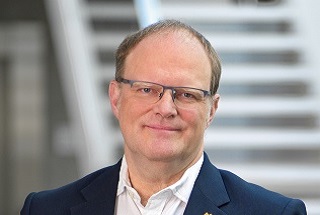"We see a lot of application potential in the results of our preliminary research"

How do you assess the year 2023 from the perspective of the "Optical Materials and Technologies" business unit?
The year 2023 once again presented a number of challenges, but I would like to highlight the opportunities when looking back. On the one hand, we succeeded in getting major equipment investments off the ground, which will enable us to offer our customers first-class equipment for the next ten years. On the other hand, we have completed several projects in preliminary research with great potential for application. These include the considerable progress we have made in laser swelling of polymers to produce high-quality micro-optics and the "GRIN2.0" project, in which we have used local ion exchange to enable new degrees of freedom in the production of gradient lenses in mineral glasses.
What profile does your business unit offer clients and what do they value about working with you?
With our microstructure diagnostic techniques, we support our customers in the development of glasses and glass ceramics, optical coatings for lithography, laser technology and ophthalmics as well as in the field of effect pigments and coatings. We use our expertise in diagnostics to develop new materials faster and optimize processes in laser-based material development. We have succeeded in almost doubling the number of direct orders from industry year-on-year. This would not have been possible without a high level of commitment and adherence to deadlines towards our customers and a team that is first and foremost dedicated to quality standards.
Turnover in the German photonics industry has almost doubled over the past ten years. What do you think is the strength of this industry?
According to surveys by SPECTARIS, the industry association for the optical industry, of which we are also a member, companies in the photonics sector invest more than 10 percent of their turnover in research and development. This pays off and means that global champions in the optical industry operate from Germany and technologies do not migrate to other regions of the world. As a partner that is already very well networked, our aim is to get to know as many of these protagonists as possible and to contribute our expertise and services to the microstructure-based development of new technologies and failure diagnostics.
What are you looking forward to in the new year and what will be a particular challenge in 2024?
After more than four years as Deputy Director of the Institute, I am very much looking forward to being able to play a greater role in developing the "Optical Materials and Technologies" business unit again in 2024. As Herculean tasks, I see the containment of excessive bureaucracy, missed opportunities of digitalization and increasingly fluid and deteriorating framework conditions for research funding in Germany.